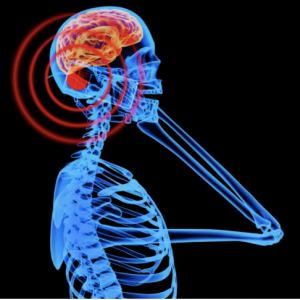-
Why is it So Hard to Change Somebody’s Mind?

by Whitney Li If you’ve been on the internet for the past 20 years, you have probably seen a comment about a political or social opinion that you thought was absurd. You probably thought, “How could any rational mind think this way? What has our society come to?” Maybe you replied in a rage, telling…
-
A Parallel Universe with Life

by Susana Torres-Londono Over time, physicists have been working towards painting a clearer and more precise portrait of our universe. In their research, they have found the four “fundamental forces”. Up until recently, it was well established that our universe– at least life in our universe– would not be possible without these forces. Even though…
-
Will Artificial Intelligence Make Doctors Obsolete?

by Sharon Binoy When many of us think of artificial intelligence in healthcare, an image of a distant Black Mirror-esque dystopia comes to mind. However, it is soon becoming a positive presence in many aspects of the medical profession. Artificial Intelligence (AI) is dramatically changing the future landscape of medicine, diagnosing diseases with an accuracy…
-
A New Male Birth Control Method is Here

by Cassidy Quilalang In April of this year, clinical trials will begin for a new, non-invasive form of male hormonal birth control. It’s a gel that you rub on your arms. These days, a host of female contraceptives are available on the market and it is fairly common to hear about women being on some form…
-
Detecting Gravitational Waves, Was it Worth it?

by Susana Torres-Londono If you’re a scientist who hopes to dedicate the rest of your life to developing and proving a revolutionary scientific theory, there’s a good chance you’ll never get to see your work’s eventual success. We all know of Rosalind Franklin, the female powerhouse who helped unravel the secrets of the human genome…
-
A Guessing Game with Some of the Highest Stakes

by Isabelle Boatright After scientists and infectious disease experts collect data on what’s making people sick every year, they gather at one of five main World Health Organization collaboration centers to argue over upcoming flus. Most people in the United States get annual flu shots to avoid the many nasty consequences that come with seasonal…
-
The Truth About Cell Phones and Cancer

By Andrea He Cell phones are now a constant fixture in our lives that we cannot live without. However, the ways that cell phone radiation could harm our bodies are still not solidified, but new evidence from the National Institute of Health (NIH) and the recent announcement from the California Department of Public Health regarding…
-
Recent Breakthroughs in the World of 2D Materials

Author: Kevin P. Nuckolls In the past few years, the search for new and exciting two-dimensional materials has taken over both the field of material science and nanotechnology. These materials have displayed previously unimaginable characteristics, including their novel electronic properties or extraordinary mechanical characteristics, making them some of the best candidates for solving some of…
-
Earth Week 2015: How you can help
Every year, we celebrate Earth Day on April 22 to mark the anniversary of a movement that started in 1970. The founder, Gaylord Nelson, then a US Senator of Wisconsin, thought of the idea after the 1969 massive oil spills in Santa Barbara, California. Inspired by the student anti-war movement (much of which started here…
-
Editor’s Picks
Light’s dual nature as both a particle and a wave has confused us all since the theory was proposed. For the first time, scientists have captured a photograph of light behaving as both a particle and a wave, using electrons to image the light. Ever wonder why you really can’t eat just one potato chip?…